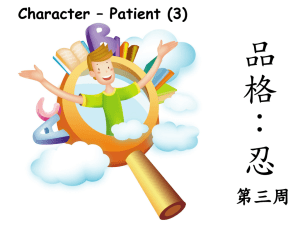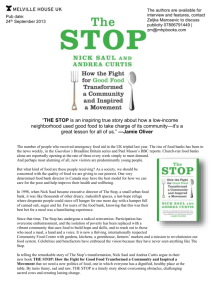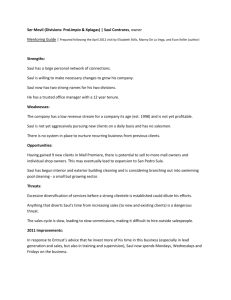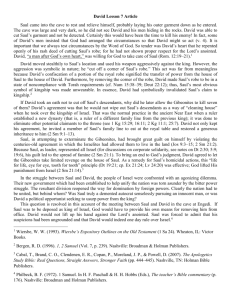Fall Risk Assessment - Washington State Hospital Association
advertisement
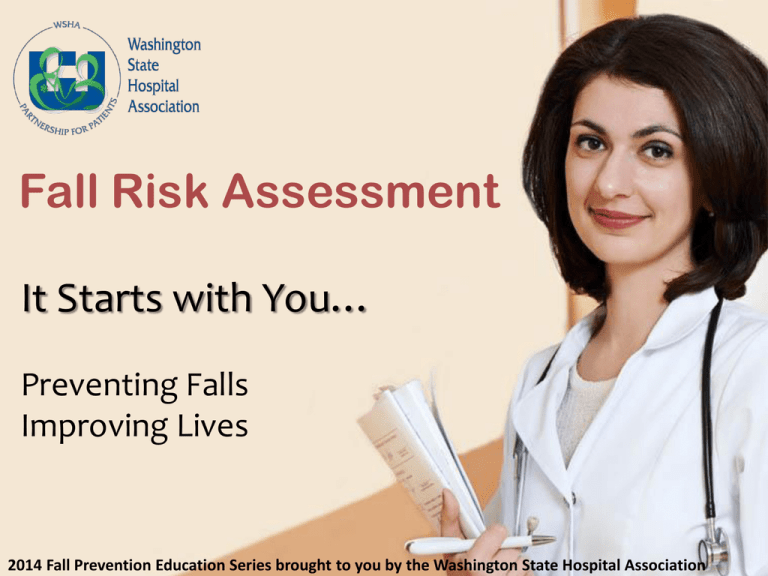
Fall Risk Assessment It Starts with You… Preventing Falls Improving Lives 2014 Fall Prevention Education Series brought to you by the Washington State Hospital Association Why focus on preventing falls? Preventing falls: • Increases patient trust • Improves care • Improves patient satisfaction • Decreases unnecessary costs for both the patient and the hospital What can I do to prevent falls? Leadership & Frontline Staff Involvement Fall Prevention Interventions Patient/Family Engagement & Culture Monitor Performance What is a Fall Risk Assessment? Screening tool to help determine patient’s level of fall risk Example: Morse Fall Scale Example: STRATIFY Assessment Example: Hendrich II Fall Model Why should I do a Fall Risk Assessment? • Allows implementation of appropriate interventions and a follow-up plan • Notifies all pertinent health care staff of risk • Highlights risk concerns for each patient • Reduces potential of serious harm • Standardizes the process of risk identification Is it really that important? Patients don’t know if they are at high risk for falls Draws information out of patients Standardized approach for all patients Which patients are at highest risk for falling? • History of Falls • Decreased independence with mobility and transfers • Impaired Cognition • Toileting Needs • Advanced Age • Environmental Factors such as call light location, room layout and clutter, IV and other tubing/wires When and how often to do a Fall Risk Assessment? • Initial fall risk on admission • Reassess with patient condition or medication change • At shift change and patient rounds I have completed a Fall Risk Assessment on my patient. What next? • Develop individualized fall prevention plans for each patient • Follow the policy in your hospital • Learn about your hospitals Fall Prevention program • Engage patients and families in developing the plan Mrs. Saul Demographic Information: 73 years old female Admitted with: Confusion, fever, and a UTI Social Situation: Lives at home alone Her granddaughter, Skyler, checks-in every 3-4 days Medications: High blood pressure and cholesterol, low dose aspirin, and a multi-vitamin. Fall History: Once, 2 months ago, with no serious injuries Additional Observations: Mrs. Saul is weak, dehydrated, and is unable to follow simple commands or answer basic questions Mrs. Saul Which aspects of this case study are fall risk factors? • • • • • • History of falls Cognitive impairment Age consideration Current medications Family situation Diagnosis and Symptoms Mrs. Saul What information is missing? What else would you need to assess in order to determine if Mrs. Saul is a high fall risk? • • • • Mobility issues Elimination Medications Environmental factors Mrs. Saul What risk factors are you noticing that would need to be considered when developing your intervention plan/care plan for this patient? • • • • • Impaired cognition Dehydration and Medication Weakness Previous fall Increased need for toileting Mrs. Saul How often should you review the falls risk and update interventions on this patient? • • • • Change in patient condition Change in medications Shift change or Staff change Post-fall What have we learned? •Complete fall risk assessment •Know risk factors •Initiate a care plan for each patient •Reassess patient’s fall risk when indicated •Engage patients and families in assessment and prevention • Include patient risk and care plan with your colleagues Other presentations available in this series Fall Risk Assessment Fall Prevention Interventions, Patient and Family Engagement Post-Fall Huddles and Data Analysis Brought to you by the Washington State Hospital Association Resources The analyses upon which this publication is based were performed under Contract Number HHSM-500-2012-00008C entitled "Hospital Engagement Contractor for Partnership for Patients Initiative.”






